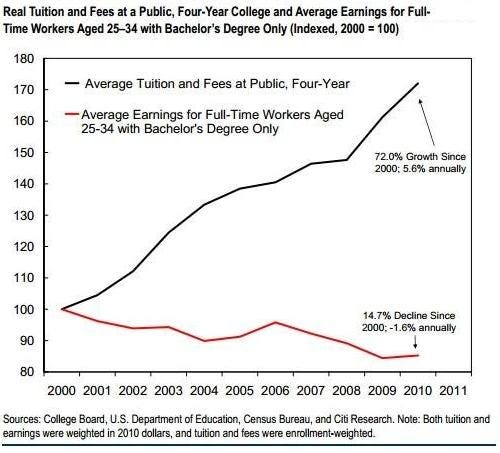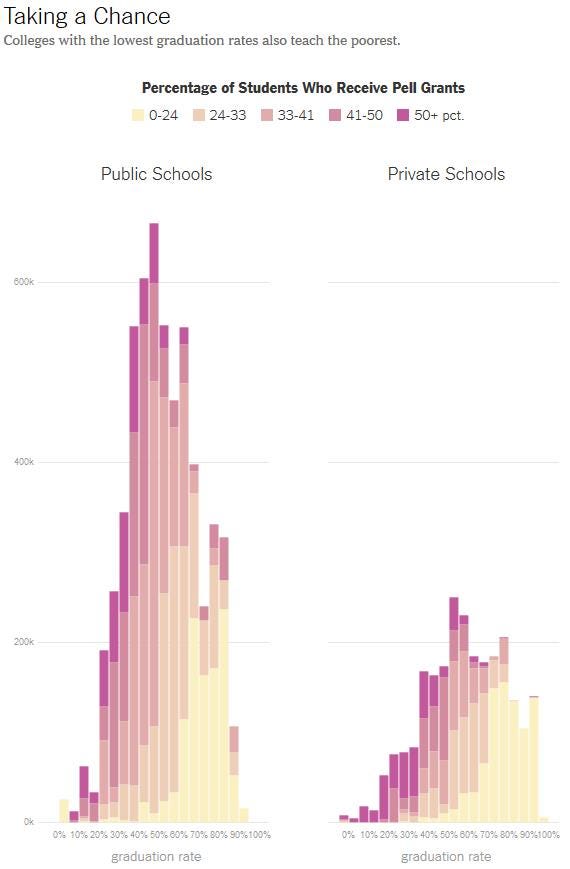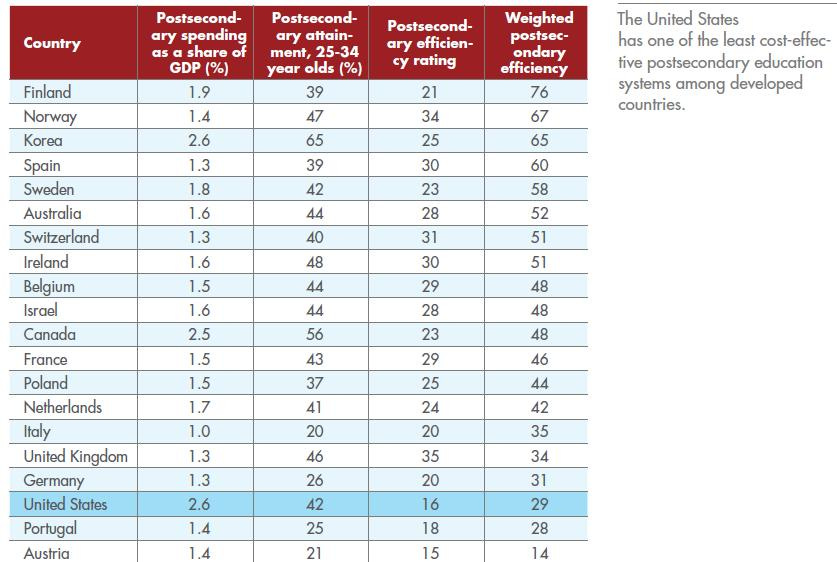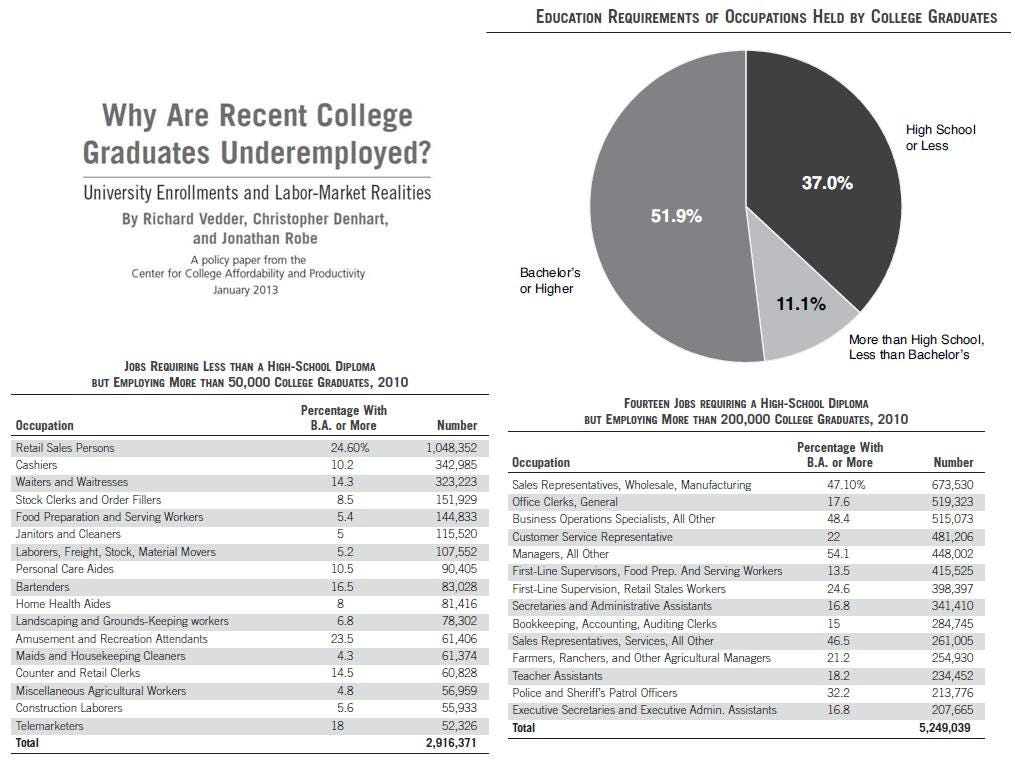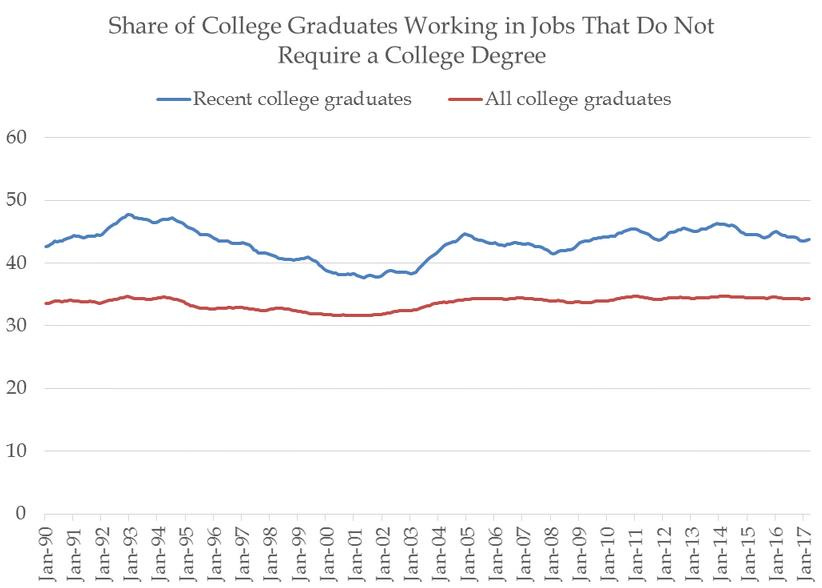Trends in Higher Education – Part 3
The lower returns of higher education.
Starting a decade ago, the price of college tuition has soared.
Yet young people were earning less.
Only about 38 percent of students complete their bachelor’s degree within four years, and only about 58 percent complete it within six years. Students who haven’t graduated within six years probably never will. Even among children of parents in the top quintile of income, only 53 percent graduate from college while 79 percent enroll.
Colleges with the most students with government loans tend to have the lowest graduation rates.
Compared to other countries, the United States has one of the least cost-effective postsecondary education systems.
Starting a decade ago, almost half of college graduates are going into debt to work in jobs the Labor Department has determined do not require a college degree.
That trend has remained remarkably stable over the past quarter-century, with no cyclical fluctuations or identifiable long-term trends. That many members of the college-educated workforce do not use their skills in the workplace has been the case for a long time. Among recent college graduates, the underemployment rate is even higher. Around 44% of college graduates ages 22 to 27 work in jobs that do not require a college degree.
A research project between Accenture, Grads of Life, and Harvard Business School concluded, after examining more than 26 million job postings and surveying 600 business and human resource executives, that “college graduates filling these middle-skills positions (those that require more than a high school diploma but less than a college degree) such as supervisors, support specialists, technicians, sales representatives, data analysts, and production managers are costing companies more money to employ, tend to be less engaged in their jobs, have a higher turnover rate, and reach productivity levels only on par with high school graduates doing the same job.”
In the next essay in this series, we’ll look at student loan forgiveness programs conditioned on working for the government.
Links to all essays in this series: Part 1; Part 2; Part 3; Part 4; Part 5; Part 6; Part 7; Part 8; Part 9; Part 10; Part 11; Part 12


